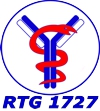Associated TP22: Detection of novel neuronal autoantigens in Stiff-Person-Syndrome
Auto-antibodies (AAbs) to glutamic acid decarboxylases(GADs), the rate-limiting enzymes in the synthesis of the inhibitory neurotransmitter gamma-amino butyric acid (GABA), are reported to be presenting approximately 60–80% of patients with Stiff person syndrome (SPS). To this date, the pathogenic significance of these AAbs remains controversial; primarily because GADs are intracellular antigens and GAD65-antibody (GAD65-Ab)-positive patients do not respond well to immunotherapy compared to those with antibodies against neuronal surface antigens. Additionally the antibodytiters do not directly correlate with the disease severity. Finally, no convincing animal model has been developed for SPS.
My project aims to identify a novel neuronal antigen that might play a pathogenic role in a cohort of SPS patients who may or may not respond to treatment with immunomodulatory regimes. In this study, recognized targets such as GAD-65 and -67 would be neutralized and characteristic signals from other novel AAbs would be studied using brain tissue from GAD-KO animals. Detection of such novel neuronal surface binding antibodies and their targets in SPS might provide a more favorable outcome, since such pathogenic targets might be amenable to immunotherapy (e.g., removal by plasma exchange). Early diagnosis and appropriate treatment might confer better prognosis compared to delayed therapy. Neural antibody testing on serum and CSF samples would help classify patients both prognostically (immunotherapy responsive or poor prognosis) and diagnostically (neurological / oncological).
In conclusion, GAD immunity plays an integral role in the development of SPS but it is vital to recognize novel cell-surface antibody targets and their effects on GABAergic neuronal functions, which might perhaps provide a basis for the phenotypic diversity.

- Projects
- Projects
- Associated projects
- MD projects
- Associated MD projects
- Concluded projects
- Concluded TP
- Concluded Ass.TP
- associated TP1 - Immunoadsorbtion
- associated TP2 - Breg
- associated TP3 - Osteoimmunology
- associated TP4 - Cytokines in EBA
- associated TP5 - Scaring alopecia
- associated TP6 - Diet and Autoimmunity
- associated TP7 - QTL in RA
- associated TP8 - Systems biology
- associated TP9 - Microbiome
- associated TP10 - Wound healing in EBA
- associated TP11 - Novel BP model
- associated TP12 - Anti-p200 pemphigoid
- associated TP13 - miRNA expression patterns
- associated TP14 - therapeutic Collagen VII and XVII-specific IgGs
- associated TP 15 - Bioactive lipid mediaters
- associated TP 17 - The role of mitochondrial DNA
- associated TP 18 -Pathogenesis of pemphigoid diseases
- associated TP 19 - New neutrophil inhibitors
- associated TP 20 - Glycosylated antibodies & autoreactive B cells
- associated TP 21 - Glycosylated IgA
- associated TP 22 - Neuronal auto-antigens
- associated TP 23 - Neuroinflammatory autoantibodies
- associated TP 24 - T cell repertoire
- associated TP 25 - Nutrition in EBA
- associated TP 26 - Circadian clocks in EBA
- associated TP 27 - Pemphigus characterization
- associated TP 28 - Mast cells in BP
- associated TP 29 - IL-10 in EBA
- Concluded MD TP
- Concluded Ass. MD TP
Principal investigator(s)
Mentors


Lars Komorowski Christian Probst
PhD student

Iswariya Venkataraman




